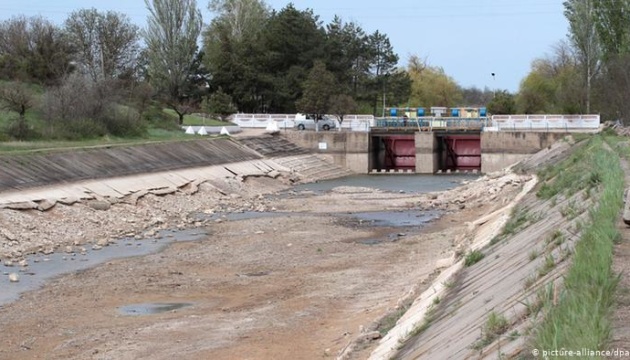
Water reservoirs becoming shallow in occupied Crimea, water disappearing
As the Crimea Realities platform reports, about a dozen large water reservoirs in Crimea have become shallow or completely depleted.
The first significant problems with the water arose in the occupied city of Simferopol and nearby areas in the summer of 2020. Against the background of depletion of reservoirs, Simferopol city and its district have been receiving water according to the schedule – for three hours in the morning and the evening – since September 2020.
In previous years, Simferopol city and the nearest populated localities were supplied with water from three reservoirs: Ayanske, Simferopolske and Partyzanske. However, water in these reservoirs fell to critical levels in the autumn.
After some time, a water supply schedule was introduced in Bakhchisaray town and Bakhchisaray district. In order to provide Simferopol with water, the occupiers involved regular troops, who laid a pipeline and pumped water from the Tayhanske and Bilohirske reservoirs, as well as the local Biyuk-Karasu River.
The Simferopolske and Zahirske reservoirs were completely depleted (which supplied water to Yalta town along with Shchaslyvenske reservoir). The occupation authorities already warned that the reserves of Zahirske and Shchaslyvenske reservoirs would be enough for a maximum of three months, so an environmental disaster is looming.
Critically low water volume is stored in the Izobilnenske reservoir, which supplies water to Alushta town. In February, 2.8 million cubic meters of water remained in the reservoir with its total volume of 12.6 million cubic meters.
Until 2014, Ukraine provided 85% of Crimea's fresh water needs through the North Crimean Canal which connects the Dnieper River with the peninsula. After Russia had occupied Crimea, water supplies to Crimea were suspended. Currently, water reserves on the peninsula are replenished from reservoirs and underground sources. According to Crimean environmentalists, regular use of underground sources leads to salinization of soil.
In 2020, the situation with the water supply to Crimea became critical. Low rainfall and dry winter led to drought, the Crimean scientists said.
Since the end of August, water supply schedules were introduced in Simferopol city, as well as in Simferopol and Bakhchisaray districts. Later, the schedules were introduced in Bilohirsk town and Bilohirsk districts and Alushta town partly.
The UN Human Rights Monitoring Mission in Ukraine has repeatedly stated that Russia bears the full responsibility for ensuring the water supply on the peninsula in accordance with international law.
The Ukrainian authorities state that water supply to the peninsula through the North Crimean Canal will be resumed only after the de-occupation of Crimea.
ol




